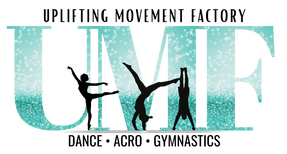Pre-Pointe Program Information
Both our Pre-Pointe and Pointe Program are developed in accordance with the pointe work criteria and guidelines provided by the orthopedics department at Washington University as well as delivered in a safe and appropriate manner with our curriculum. We do not place ANY student under the age of 11 on pointe.
General Information
Pre-Pointe is designed for female students ages 11 and above who are making acceptable progress towards future pointe work and for male students of the same age who can benefit from the extra attention to footwork, alignment and strengthening. It is important to realize that some students advance to pointe more quickly than others. These decisions are made for the health of your dancer. Premature (both in age and ability) pointe work can create a lifetime of physical problems. The transition from pre-pointe to full pointe work will be determined by many different factors:
Benefits & Reasons to Join the Program
Program Goals
Physical & Cognitive Requirements
Other General Expectations
General Information
Pre-Pointe is designed for female students ages 11 and above who are making acceptable progress towards future pointe work and for male students of the same age who can benefit from the extra attention to footwork, alignment and strengthening. It is important to realize that some students advance to pointe more quickly than others. These decisions are made for the health of your dancer. Premature (both in age and ability) pointe work can create a lifetime of physical problems. The transition from pre-pointe to full pointe work will be determined by many different factors:
- Age
- Bone ossification
- Posture / Body alignment
- Muscular strength and endurance (core and leg)
- Maturity
- Ballet technique
- Foot and ankle mobility
Benefits & Reasons to Join the Program
- To maintain the interest of dancers who are close, but not quite ready for working en pointe safely
- For the serious dancer who is too young to safely begin pointe work, but is otherwise ready
- For pre-teens who are physically ready for pointe work but who are not focused or committed enough to safely put en pointe
- To refocus the dancer’s attention on the basics and alignment...
- As they contend with their body’s changing due to growth
- As they experience in the physical changes due to hormones
- The increased challenge provides the perfect reason for the dancers to revisit all of their foundational movements with a fresh eye
- Dancers are now older and better able to concentrate on perfecting the basics than they were when the movements were first being taught. Teachers can now provide new layers of information that the dancers should be able to comprehend and process.
- To build strength and flexibility in the feet and ankles, primarily, but overall grow strong in movement and postural awareness
Program Goals
- Development of the intrinsic muscles of the feet
- Better articulation
- Improved dexterity and control of the toes and arches
- Increased strength and endurance of the muscles of the foot
- Heightened awareness of the alignment of the foot and ankle
- Increased mobility of the foot and ankle
- Improved ability to control the movement of the foot and ankle
- Increased strength and endurance of the muscles of the lower leg
- Improved balance
- Improved consistency of turnout
- Increased strength and endurance of the core and postural muscles
Physical & Cognitive Requirements
- At least 11 years of age AND 3-4 plus years of continuous ballet technique training
- Proper physical development for age
- Adequate performance of the screening criteria
- Awareness of the importance of the standing leg
- Proper use of the floor
- Turnout comes from the top of the thigh in the hip socket & not the knees or feet
- Good strength and alignment throughout the execution of:
- Plié, Tendu, glisse/dégagé, Ronds de jambe Élevé, Relevé, Fondu, Frappé, Petits battement, Sur le cou de pied, Coupé, Pas des bourrée, Battement soutenu, Passé
- No history of foot, ankle or lower leg injury (previous injuries should be cleared by a physician)
- Understanding neutral spine and pelvic placement and can attain both with prompting
- Knowing the difference between hyper-extended, straight and bent knees and being able to correct their stance with prompting
- Possession of adequate turnout to allow for the proper execution of movements common to classical ballet
- The muscles of the torso, pelvis and back are strong enough to provide proper support and stability.
- Mental focus
- Ability to remember combinations
- Ability to focus on the essence of the exercise
- Ability to apply corrections
- Maturity / Emotional Readiness
- Understands the difference between discomfort and pain
- Accepts that people progress at different rates
- Understand self efficacy
- Accepts that physical development will be as important as talent for the progression from pre-pointe to pointe work.
Other General Expectations
- A minimum of 2 additional ballet (or modern) classes per week at 45- 1 hour in length each in addition to the pre-pointe/conditioning class
- Dancers pursuing pre-pointe/pointe work should not be taking the summer off from their ballet and general dance training. Pre-pointe, and essentially pointe work, requires a level of proficiency that requires consistent training to achieve well and safely.
- Consistent attendance in all ballet classes
- The ability to do 10 – 15 minutes of homework when required
- Understand that your dance teacher is not a trained health professional
- Understand there is an inherent risk for injury and pain and discomfort with increased dance activity and pre-pointe work
© 2021 Uplifting Movement & Fitness All rights reserved.
